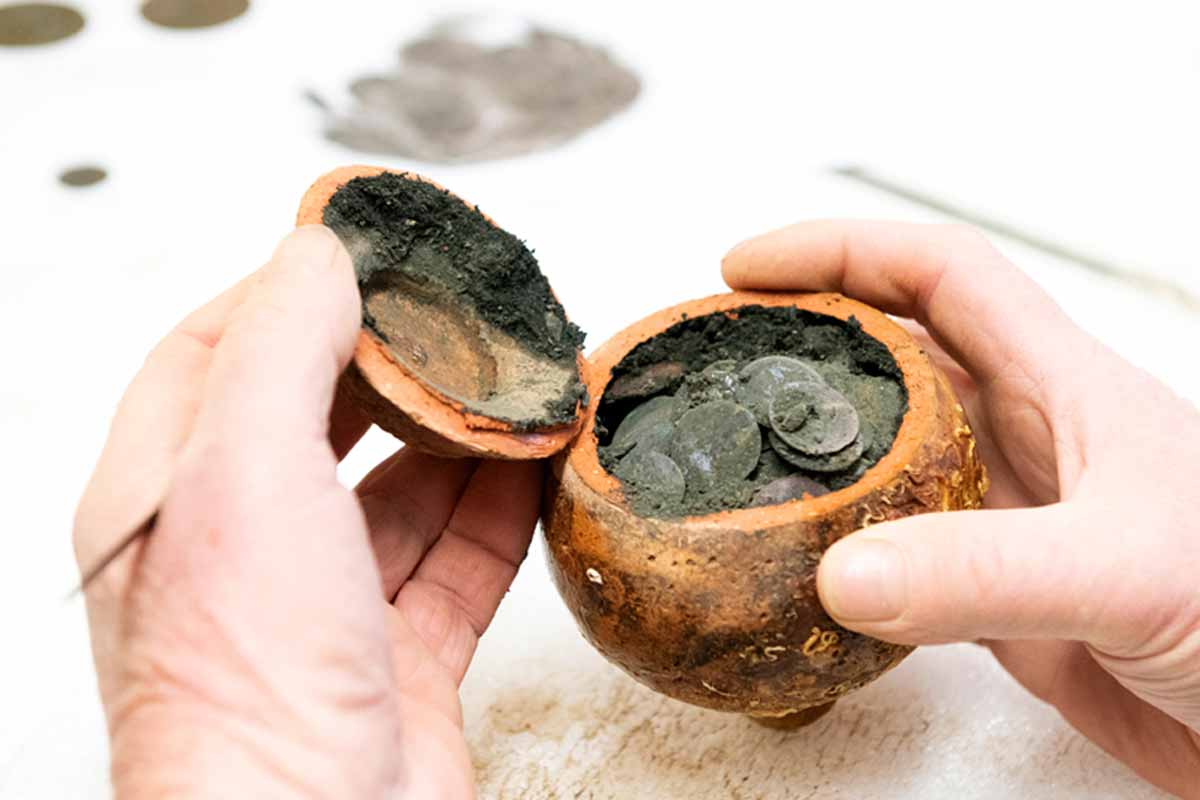Desert treasure has a way of tugging at your imagination. You picture dunes, heat, and a secret waiting in the sand. Then someone lifts a clay jar, and the past unlocks itself. Not theory. Not guesswork. Hard silver in a quiet vase. Ready to meet the story hiding in plain sight?
Desert treasure
In 2021, a team dug into the Sharjah desert and paused. The clay vase they lifted felt too heavy. More than nine kilos for simple pottery doesn’t add up. They opened it and found 409 silver coins, bright as moonlight. This wasn’t luck; it was desert treasure carefully stashed and left to guard a moment in time.
A jar that changed the room
The coins weren’t random pocket change. Most were Hellenistic tetradrachms dating to the 3rd century BC. Each weighed around sixteen to seventeen grams, consistent and deliberate. Early pieces showed Alexander the Great as Heracles, with Zeus lounging on his throne. Later issues traded gods for Aramaic script and local images, a whisper that desert treasure evolves with the people who mint it.
A city with its hand on the map
Mleiha sits between the Persian Gulf and the Gulf of Oman. That spot matters when ships stitch India to the Mediterranean. Spices, incense, textiles, metalwork—Arab merchants moved it all with practiced ease. They needed coins strangers would trust, yet still theirs in spirit. You feel that mix in this desert treasure, Greek ideas bent to fit Arabian trade.
Coins that talk across borders
The vase doesn’t stand alone on a pedestal. Similar coins turned up in Bahrain and Kuwait, cousins with familiar faces. The network was bigger than many imagined, a web of ports and caravan stops. Greek emblems traveled, then shifted, picking up local flair like a passport full of stamps. That’s the heartbeat of desert treasure always moving, always changing hands, always telling on its owners.
Roots that run deeper than the sand
Mleiha’s timeline stretches far beyond the Hellenistic breeze. People lived here roughly 130,000 years ago, leaving quiet traces. Later, fields thrived using falaj underground channels that pulled water like a magician’s sleeve. Walls rose, workshops sang, and palaces watched the horizon. In a city that busy, hiding desert treasure wasn’t greed; it was strategy, maybe even a promise to return.
What the silver really says
This find resets old assumptions with calm confidence. The Hellenistic world didn’t stop at familiar shorelines; it reached deep into Arabia. Coins shifted from Greek iconography to regional marks, not as imitation, but as translation. Power speaks in the language of money, and Mleiha spoke fluently. Hold this desert treasure, and you hear merchants bargaining, rulers planning, families hedging their future.
Why it matters to us now
We chase headlines and forget the soil holds receipts. A single vase carries trade routes, diplomacy, fashion, even faith. You can measure its heft and still miss its warmth. Someone tied that jar, tucked it away, and walked home at dusk. That small human act is the soul of desert treasure, turning data into a heartbeat you can almost feel.
The past isn’t done talking
Archaeology looks slow from the outside. On days like this, it sprints. The coins flash, the map redraws, and a quiet desert town steps into the light. Arabia wasn’t isolated; it negotiated, borrowed, and remixed with style. When you read the edges of this desert treasure, the region stops being a blank and becomes a crossroads.
What we carry forward
Not every lesson is carved in stone walls. Some jingle softly in a clay belly. Trade needs trust, and trust needs shared signs, even when names change. Cultures meet, argue a little, and create something better than either alone. That’s the gift of desert treasure—proof that exchange, when it breathes, makes the world feel smaller and richer at once.
